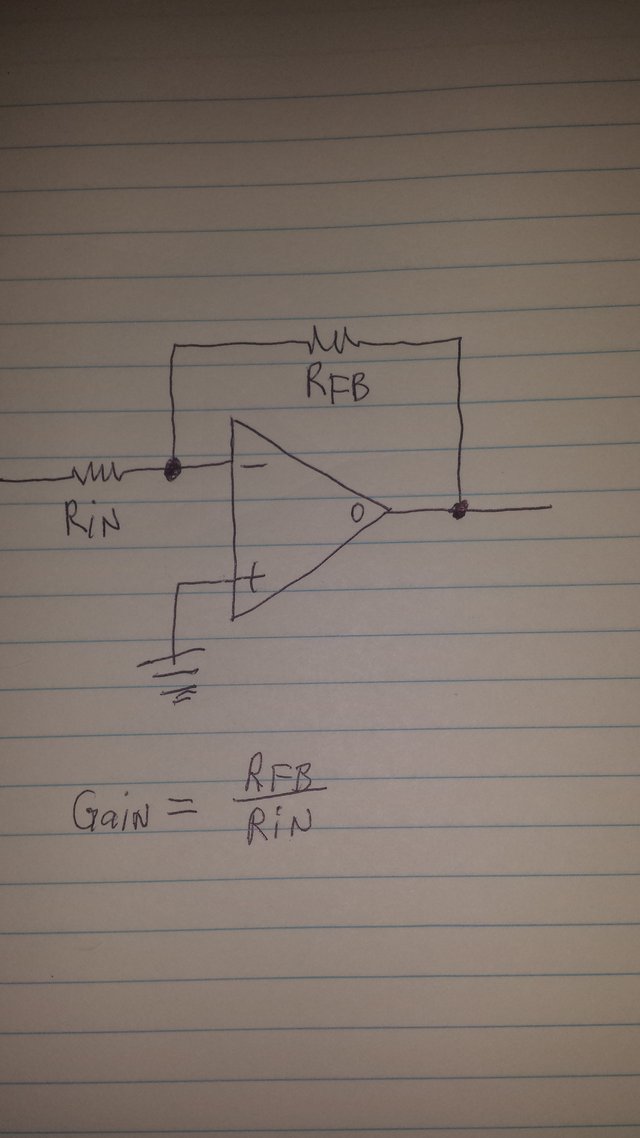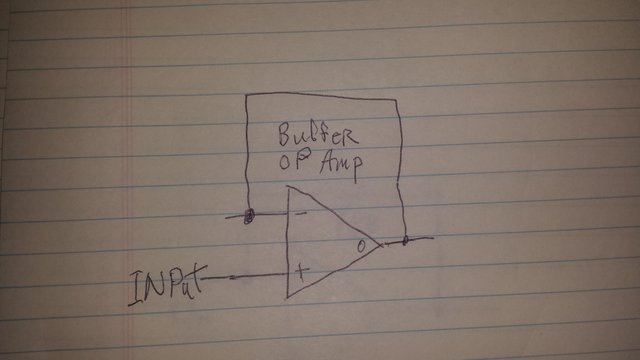An Operational Amplifier is a fun DIY electronic building block everyone can use!
There is a very useful electronic part that every DIYer should find useful in their projects. It is called an Operation Amplifier, or opamp for short. There are 50 years of electrical engineering work behind the design, but al that work just makes it easier for You to use. You don't need to know about current mirrors, differential inputs, frequency response, or input impedances; all you need to know is that you have a servant that is easy to use.
Look at this opamp as a three lead device (to keep it simple). You have an output lead, and positive input lead (non inverting input), and a negative input lead (inverting input). They come in single, double, and quad (4) package ICs (Integrated Circuits). You will have to apply power to the IC according to the diagram that comes with it, THEN you can play!

The primary advantages of an opamp are stability and simplicity. If you run a signal into the opamp through an input resistor (Rin), with a feedback resistor (Rfb) tied from the output to the inverting input; the ratio of these resistors sets the gain of the opamp. If I choose a 10,000 ohm Rin, and a 100,000 ohm Rfb; and I send a 0.5 volt ac signal into the Rin, I will see a 5 volt matching signal on the output lead. So if you have a small signal, say on a (0.01 ohm) cathode current sense resistor, you can make it look bigger to your monitoring devices. This can make a tiny signal (used to avoid power waste) into a signal that is easy to monitor.

Another use of an opamp that you should use is called a buffer amplifier. When you want to look at a weak signal, that changes when you try to read it, insert a buffer amp, and the opamp will use it's strength to give you that same signal, without any changing. To do this, simply run a wire from the output to the inverting input, and connect the non-inverting input to the signal you want to read.

For DIY use, I recommend the LF353 dual opamp IC package. it is small, stable, low cost, and very proven.
:)
howdy @smithlabs! no comments here. from me either.
everyone likes it they just don't understand it!
I have no idea what this is lol!
Ouch, thought I made it easier to read! This is a part that lets you control signal levels by making them what ever is easy to monitor. Instead of reading tiny levels, you can make them larger, in a controlled way, so they still reflect input changes.
It just lets you push signals around until they behave.
:)
ok I didn't know you could push them around!
well probably more people than me understood your post. hopefully.
Yes, pushing signals around is the electronic equivalent, of a leash. With this you can control widely varied things, easily and inexpensively.
If you just figure out how to use the three lead opamp, you never need to go deeper inside, to have 50 years of engineering working for you on a home made DIY project.
The first differential amp I bought, cost me $70. The first IC opamp was $14, and I had to wait six weeks to get it. That same IC is nine cents today. Electronics can deliver lab grade opamps to the DIY tinkerer for pennies; that will give professional results, with easy building modules.
Don't you love new toys?
:)it's remarkable @smithlabs!
makes you wonder what things will be like in 5 or 10 years!
Well, I don't think handhelds will get too much smaller. Not because that is hard, but because people will begin loosing them too easy. The computing power will increase, a lot, and the displays will be projected, possibly onto glasses. the computers will recognize the movement of your eyes, and you will no longer need a mouse. The keyboard will become projected with an optical scanner for your fingers. Voice recognition will be the primary input method soon.
:)whaaattt??? what the?
what if I like the method like it is now?
did you ever tell me how long it will take those super batteries to come online? that's gonna be amazing.
All this tech is functional today, it is just too expensive, for now. The only constant in tech, is everything changes. I had a friend tell me that CPM (command Program for Microprocessors) was perfect, and we should never change it. Then came DOS, then Unix, then Windows; and somewhere in there a new fangled toy called a mouse snuck in....
:)The original post on the graphene batteries was an Amazon ad; they are for sale Now. Like all new tech, they are insanely high, but you can buy them today.
YES!Maybe an example will help. Say I have a 24 volt battery that I want to run at 2.5 amps.
If I place a SMALL value resistor (so I don't waste power) under the negative side (say a 0.01 ohm resistor) I will get 0.0625 volts at 2.5 amps. if I run this voltage into an opamp set with a gain of 50, I get 3.125 volts at 2.5 amps. This voltage is easy to measure with any measuring gear;the most common is a microprocessor, but a meter works fine too.
The voltage can be divided down so that 24 volts becomes 2.4 volts. Running this through the buffer opamp, will allow stable readings without loading the divider. NOW, you can take a voltage that would have burned up the microprocessor (24 volts is BAD for micros) and monitor that voltage. So when we get to 2.0 volts we know we are at 20 volts on the battery, and stop using it until it is recharged.
You can do BOTH of these fuctions in one IC chip for about forty cents.
:)